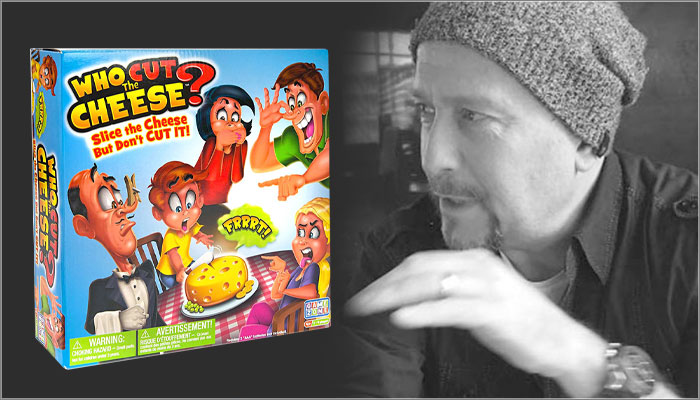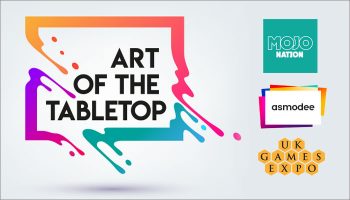Illustrator Kenny Kiernan on how a cocktail of coffee and candy can kick-start creativity

Kenny Kiernan is a self-taught artist, specialising in toy and game illustration, packaging art, and character design.
He has created work for the likes of Hasbro, LEGO, Disney, Marvel, DC and Scholastic, and is an increasingly vital ally for toy and game inventors; providing concept art for some of the industry’s biggest invention houses and design studios.
We caught up with Kiernan to learn more about how he got started in the toy and games space, and what he does to fuel his creativity.

How did you develop a passion for illustration, and when did it click that you could do it for a career?
I didn’t develop it; it was always just there! I was always just naturally one of those kids who could draw. I loved comics and cartoons and read all of the fantasy and sci-fi books and would be endlessly inspired by all of that. However it never seemed like a realistic career option.
It was only in my twenties, after having wasted a bunch of time and effort on things I didn’t like, that I realized I wasn’t going to be happy with some regular corporate job like all my friends were doing and apparently having no problem with. I had to do something that I actually identified with and cared about, and art was the only thing.
I grew up in New York City and I found out at this time that a few guys I knew from high school had actually interned and worked at Marvel and DC Comics; this floored me! That people I knew had actually worked at these companies, and that it was in fact humanly possible to do this was a huge eye-opener; it legitimized the idea of being a professional artist to me.
But I definitely did not want to be the classic “Starving Artist” which was an idea that never appealed to me. I wanted to be a successful “commercial artist”, which to me seemed like a dream job – getting paid for creating cool artwork! And it is! Although it’s so much more work maintaining a career as a freelance illustrator than it is to have a regular staff job, I still find it very rewarding and wouldn’t want to do anything else.
And how did you start working in the world of toys and games?
I eventually started working with an agent and getting toy and game assignments because my style was suited to this kind of work – and of course, I loved it.
Everyone acknowledges the thrill of seeing your own work on the store shelves! Or when someone already owns something you illustrated and they say: “Wait, you drew that?” That’s cool. So it was a case of the opportunity presenting itself and I ran with it; then started building on it, deliberately looking for more of this kind of work.

What are those first steps of a new project like? As someone who possesses no drawing skills at all, I’m fascinated by those first decisions and how you end up selecting what style of illustration to go for.
You’ll get a description of the job and size specs, and some indication, to varying degrees of detail, of what the client wants the art to be. Typically you’re being hired for a project because the art director has seen your portfolio and feels that your style is appropriate for the job at hand, so you’re being asked to deliver a similar treatment but in a new context.
Usually, for the younger toys and games, you’re trying to show at a glance that it’s a super-fun game by illustrating a few kids or a family playing and interacting with the product, or illustrating a funny visual gag or scenario if it has a fun, jokey title. And you want to show the physical gameplay in a fun way, emphasizing whatever the unique action or focal object of the game is.
For games that skew older, it’s about creating a cool illustration to set the mood and evoke whatever the setting of the game is. I’m interested in getting more of this kind of work as well – the more gritty fantasy D&D-type characters, science fiction themes, etc – love all that stuff!

You’ve created the artwork for lots of mass-market games – are there any must-haves when it comes to character design/illustration for these types of projects, or does it change on a case-by-case basis?
In my experience it does change on a case-by-case basis, with the only must-have being that per the point related above, your client may be seeking a similar treatment from one of your past projects on the current job. So usually that means the same stylistic treatment of characters or objects. However, because things do change, it’s smart to ask for clarification; I always ask the client to indicate any specific images from my portfolio that best represent they style they want, and sometimes I’m surprised by what they send.
For example, on my website www.kennyk.com, I show work I’ve done in my vector illustration cartoon style and in my digital paint cartoon style, which to me look pretty different and are very different ways of working in some respects. But I may have been talking or emailing with a client, then they send the reference images of what they have in mind and it’s my vector work even though verbally they indicated my digital paint style, or vice versa. This kind of thing doesn’t happen a lot, but it does happen – so always check!
Part of the job is trying to be a mind reader because it’s often difficult for people to effectively articulate an artistic idea, especially if they’re not an illustrator themselves. Art directors will usually send you some reference images, but if not – ask for them! A picture tells a thousand words.

And I imagine clients don’t want their products looking exactly the same as everything else, so is that something you have to consider? And if so, how experimental can you be?
Yes it is something to consider. Your art director will likely have a decent or maybe excellent and very thorough knowledge of what’s current and trending, which is what a client often wants – whatever look or idea is hot! So it’s got to feel current and like it belongs in whatever category the item is in, without being too similar to what’s already out there. This is with regard to colour palette, characters’ poses and rendering style, logo fonts, etc.
How experimental you can be varies widely, in my experience. You may be given a fully thought-out layout with sketch already in place which you’re being asked to recreate in your own style, so the direction is already established. Or you may be given just a simple verbal description that’s wide open for interpretation, and you can just run with it! I enjoy both approaches, and both are effective for me.
I always like to offer several different initial layouts and let the client choose a direction, and we go on from there. So if I’m proposing an idea that’s maybe a bit non-traditional, I’ll always balance that out with a very conservative layout or two as well.

And regarding your own process; how do you fuel your creativity?
I can get burnt out when things get really crazy for an extended period of time, but thankfully I’ve learned that if I just get away from it for a day or two, my mojo – ha! – always comes back strong! I’ll have the energy back and can crank away like a madman again.
Also lots and lots of coffee, all the time! And on occasion when I’m really kicking it into marathon overdrive, I’ll go for a candy sugar rush which puts me back in the zone for a few more hours – works every time. Pretty sure there’s something psychological going on there where I’m channelling that inner little-kid energy and enthusiasm that I was talking about earlier. I’ll take it!

So, aside from always having a healthy stock of coffee and candy nearby, what advice would you give any illustrators looking to break into the toy and game industry?
When building a toy and game portfolio, you need to show a cohesive body of work (say 20 images) with a consistent style and feel. If you have a bunch of different styles represented to show off your versatility, it may work against you because the client may not feel that they know what they’re going to get if they hire you!
Put the other styles or any super-artsy stuff in different portfolios geared toward those audiences – but to get toy and game work, show toy and game-looking work.
If no one is hiring you yet to do these things and you need to build up your portfolio, assign yourself the kinds of projects you’d like to work on, and make them awesome. Even if it’s not a paid job, they still count as valid portfolio pieces that an art director can refer to for a new project. And of course your skills increase every time you do one of these. So this is worth your time to do.
Also, promote everywhere! You need to have people looking at your work and reacting to it. Over time, you’ll seewhere you’re getting the most interest and you can refine your efforts by discarding what proves to be useless and doubling down on what’s getting you anything. Being shy about your artwork will not help you get work – you have to put it out there!
Keep learning and building new skills; there are so many free and inexpensive tutorial videos out there that there will always be new things for you to learn and use!
——
To stay in the loop with the latest news, interviews and features from the world of toy and game design, sign up to our weekly newsletter here

















